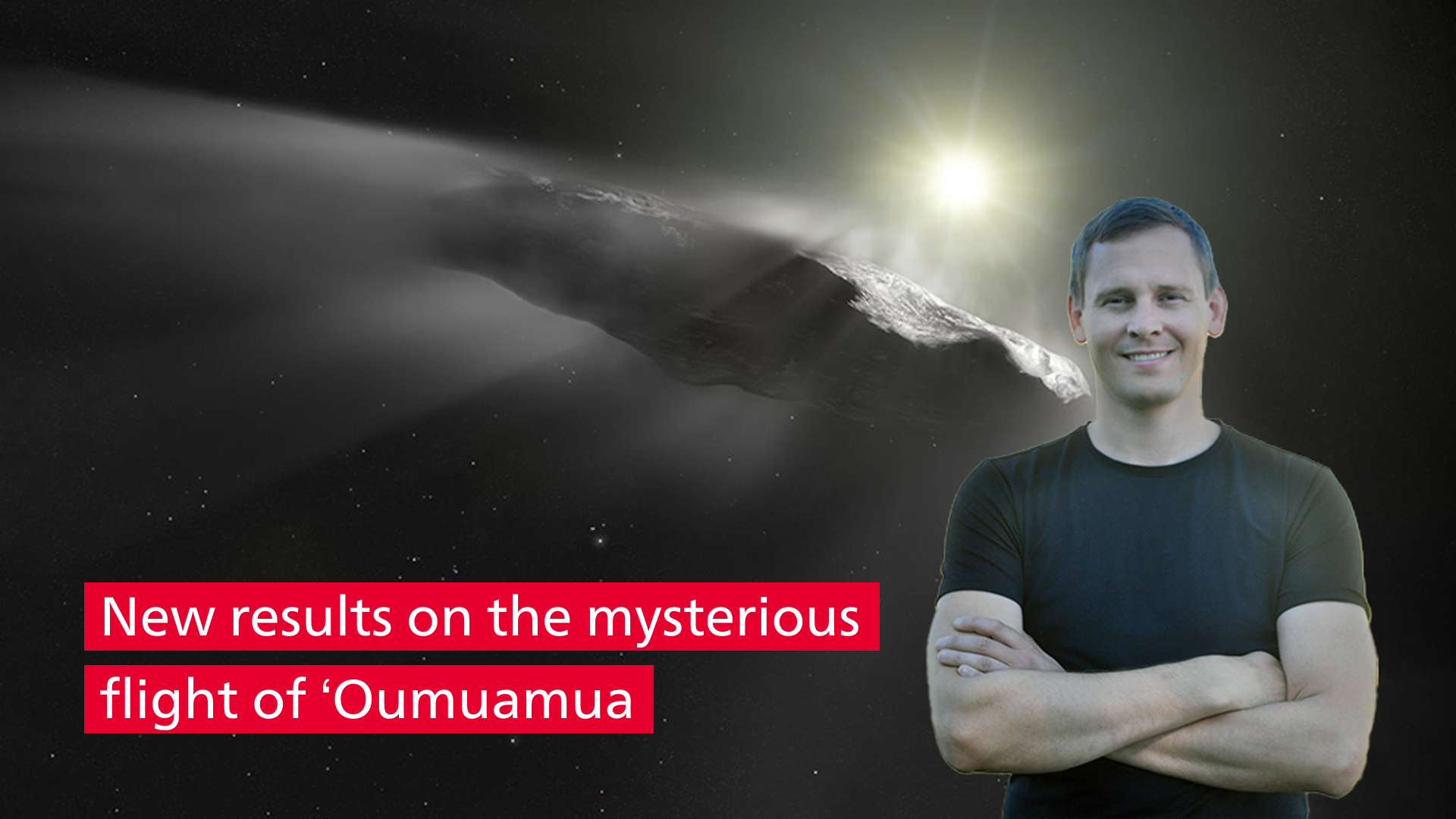Video
Visitor from outer space
'Oumuamua is the first interstellar object ever observed in our solar system. In a video interview, Niels Ligterink from the University of Bern presents new research findings on why 'Oumuamua accelerated as it passed by the sun.
On 19 October 2017, 'Oumuamua, an object about 120 meters long, was discovered with a telescope in Hawaii. Based on its trajectory, it was clear that it was an interstellar object, i.e., an object that did not originate from our solar system. Its Hawaiian name means "messenger from afar that arrives first", as 'Oumuamua is the first interstellar object ever to be observed in our solar system.
In March 2023, a study was published in Nature in which the researchers investigated the question of why 'Oumuamua accelerated as the object flew past the sun. Gravitational forces alone were not a possible reason for the acceleration. The authors Jennifer Bergner and Darryl Seligman postulated that 'Oumuamua was accelerated by the thermal outgassing of hydrogen that had accumulated during 'Oumuamua's interstellar journey.
Niels Ligterink from the Space Research and Planetary Sciences Division of the Physics Institute at the University of Bern now presents new results in Nature on the mysterious flight of 'Oumuamua through our solar system. In the video, he explains that his models and laboratory analyses call into question the theses of Berger and Seligman to the extent that 'Oumumua must be much older than assumed and have a different composition in order to have produced the necessary amount of hydrogen for outgassing. Ligterink also comments on the speculation that 'Oumuamua could be an extraterrestrial spaceship.
About the person

Niels Ligterink has been a postdoctoral fellow at the University of Bern since 2018. He studied chemistry at the Free University of Amsterdam and subsequently received his doctorate in astrochemistry from the Leiden University. Niels Ligterink is interested in the chemical processes that take place in space and the information that these processes can provide about the origin of life and the formation of stars and planets. He develops instruments for space missions to detect molecules on extraterrestrial planets, conducts laboratory experiments to understand chemical processes, and uses telescopic observations to study molecules around distant stars.
Contact:
Dr. Niels F.W. Ligterink
University of Bern, Physics Institute, Space Research and Planetary Sciences Division
Tel: +41 31 631 44 15
Email: niels.ligterink@unibe.ch
Papers mentioned
Bergner, J.B., Seligman, D.Z. Acceleration of 1I/‘Oumuamua from radiolytically produced H2 in H2O ice. Nature 615, 610–613 (2023).
https://doi.org/10.1038/s41586-022-05687-w
Ligterink, N. F.W. Accelerating ‘Oumuamua with H2 is challenging, Nature, 30.11.2023.
https://doi.org/10.1038/s41586-023-06697-y
Subscribe to the uniAKTUELL newsletter

Stories about research at the University of Bern and the people behind it – gripping, multimedia and free of charge.
